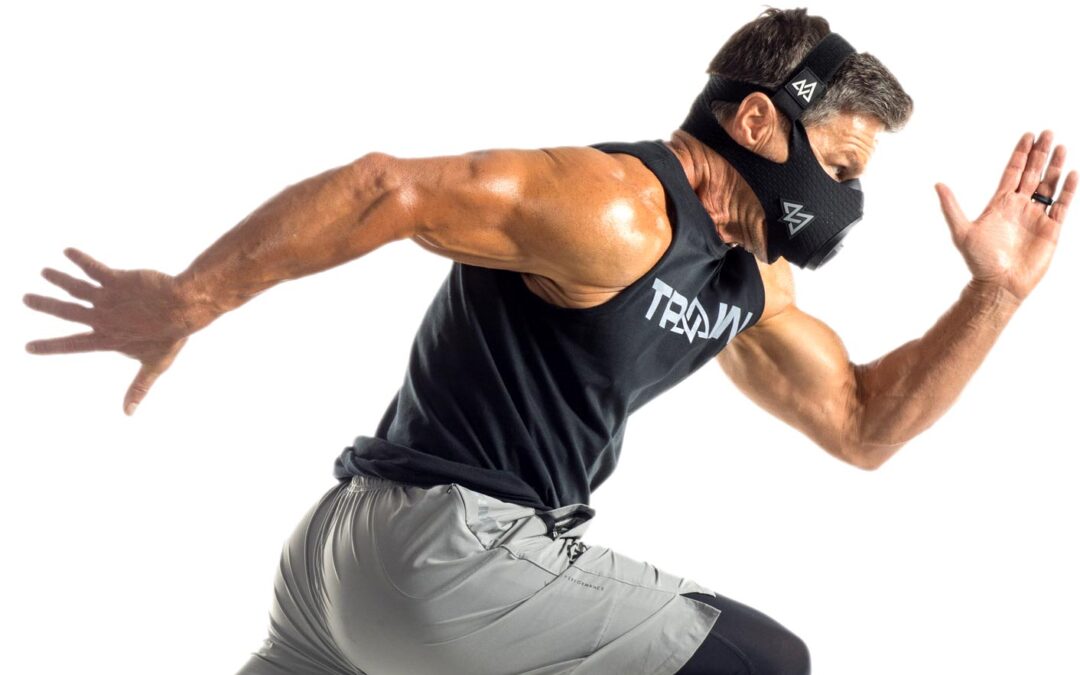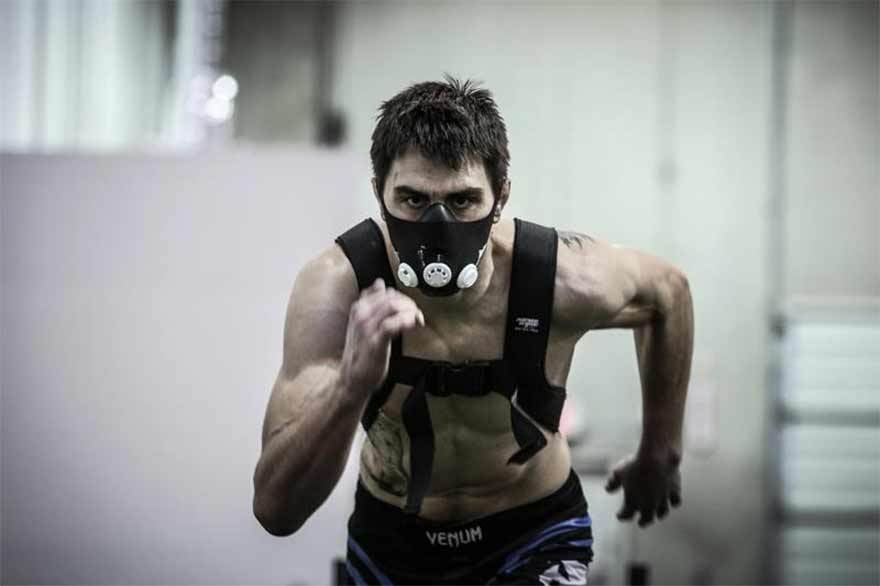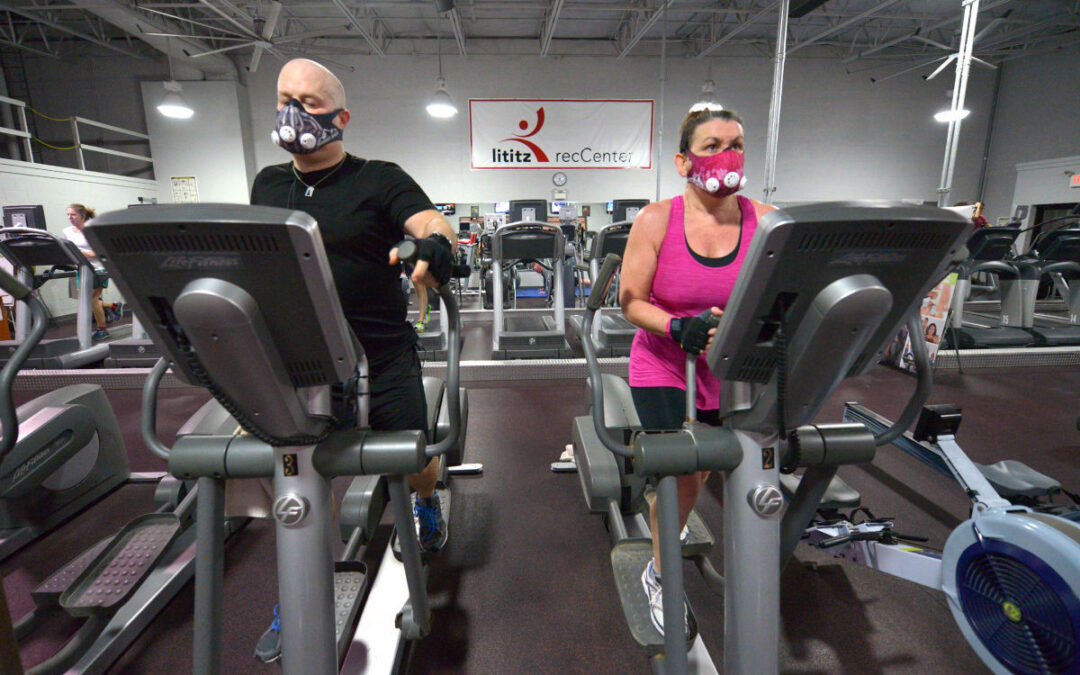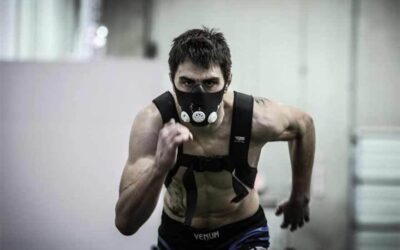If you are in for a high intensity training program to boost your cardiovascular conditioning by using the Training Mask you are in the right place. Building your high intensity workout routine around different heart rate intervals will precisely target your respiratory muscle strengthening, conditioning and help you break through your exertion threshold.
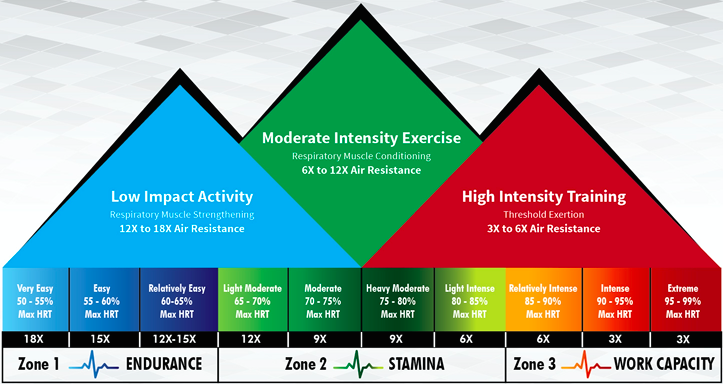 High intensity training is also one of the best ways to lose fat and doing it by using the right respiratory resistance will strengthen your power and endurance no matter what exercise you are doing. In this post we are going to look at how you can incorporate the Training Mask in your workouts and make your high intensity sessions even more intense by controlling the air resistance.
High intensity training is also one of the best ways to lose fat and doing it by using the right respiratory resistance will strengthen your power and endurance no matter what exercise you are doing. In this post we are going to look at how you can incorporate the Training Mask in your workouts and make your high intensity sessions even more intense by controlling the air resistance.
Zone 1: Endurance
 Zone 1 is the easiest of the 3 zones and puts all the focus on developing the strength of your respiratory muscles. When training in Zone 1 your heart rate should be sitting at 50-65% of your maximum. This interval will allow you to focus more on your breathing and learn how to breathe more efficiently.
Zone 1 is the easiest of the 3 zones and puts all the focus on developing the strength of your respiratory muscles. When training in Zone 1 your heart rate should be sitting at 50-65% of your maximum. This interval will allow you to focus more on your breathing and learn how to breathe more efficiently.
In Zone 1 you want to be doing low impact activities which are not that taxing on your breathing, and crank it up a little bit by using an aggressive 12x to 18x air resistance setting on your Training Mask. These settings work best when you are doing things such as yoga, walking or brisk walking. The easier the activity you are doing the higher the air resistance factor should be.
For example, on very easy yoga session you can use the 18x air resistance setting on your Training Mask to get your heart rate up. On easy or relatively easy activities such as (brisk) walking you want to turn the air resistance down a little bit to 12x-15x.
Zone 2: Stamina
 In the second zone things get more difficult; with your heart rate going between 65-85% of your maximum you will be working in your respiratory muscle conditioning state. In this zone you want to perform moderate intensity exercises that still allow for a relatively high air resistance setting of 9x-12x on your Training Mask.
In the second zone things get more difficult; with your heart rate going between 65-85% of your maximum you will be working in your respiratory muscle conditioning state. In this zone you want to perform moderate intensity exercises that still allow for a relatively high air resistance setting of 9x-12x on your Training Mask.
These air resistance settings will work great with exercises such as light jogging, hiking, elliptical training or pick-up basketball game. Depending you how intense the activity is, you should select the right air resistance – use more air resistance for easier activities and less air resistance for more difficult activities.
As an example, we consider the elliptical trainer to be a light-moderate activity which will allow you to use a more aggressive air resistance of up to 12x. Hiking on the other hand is a fairly difficult activity which will probably have you set the Training Mask to a 9x air resistance.
Zone 3: Workout Capacity
 In Zone 3 you will have all your super-high intensity activities that will sky-rocket your heart rate and will boost up the oxygen consumption. With a heart rate of 85-99% of the maximum, your body is pushed to the absolute maximum.
In Zone 3 you will have all your super-high intensity activities that will sky-rocket your heart rate and will boost up the oxygen consumption. With a heart rate of 85-99% of the maximum, your body is pushed to the absolute maximum.
Your breathing becomes fast and your mind can’t focus anymore on deep, efficient inhales. But with proper training and smart use of the Training Mask, you can teach your body to involuntary control your breathing and allow you to take fuller, more efficient breaths.
In Zone 3 you will be doing high intensity workouts such as stadium stairs climbs, high intensity training or sprint drills. It will be enough to set your Training Mask on a mild 3x-6x air resistance in order to get your heart rate though the roof.
The goal of using the Training Mask on high intensity activities is to break through your exertion threshold and develop your overall workout capacity. On the most intense and extreme activities use 3x air resistance and take off the Training Mask whenever you need if you can’t complete the session. On relatively intense sessions you can use an air resistance setting of up to 6x, depending on your conditioning.
Bottom line
You don’t have to be spot on with the numbers in the chart on all activities. Pay attention to how your body feels and look at these numbers as guidelines rather than strict rules.
You will know you have set your Training Mask right when you are able to complete the workout session without taking it off more than 1-2 times. Ideally you want to complete the entire activity with your Training Mask on, but that will take time, effort and practice.
You can save and print the advanced workout image below:





